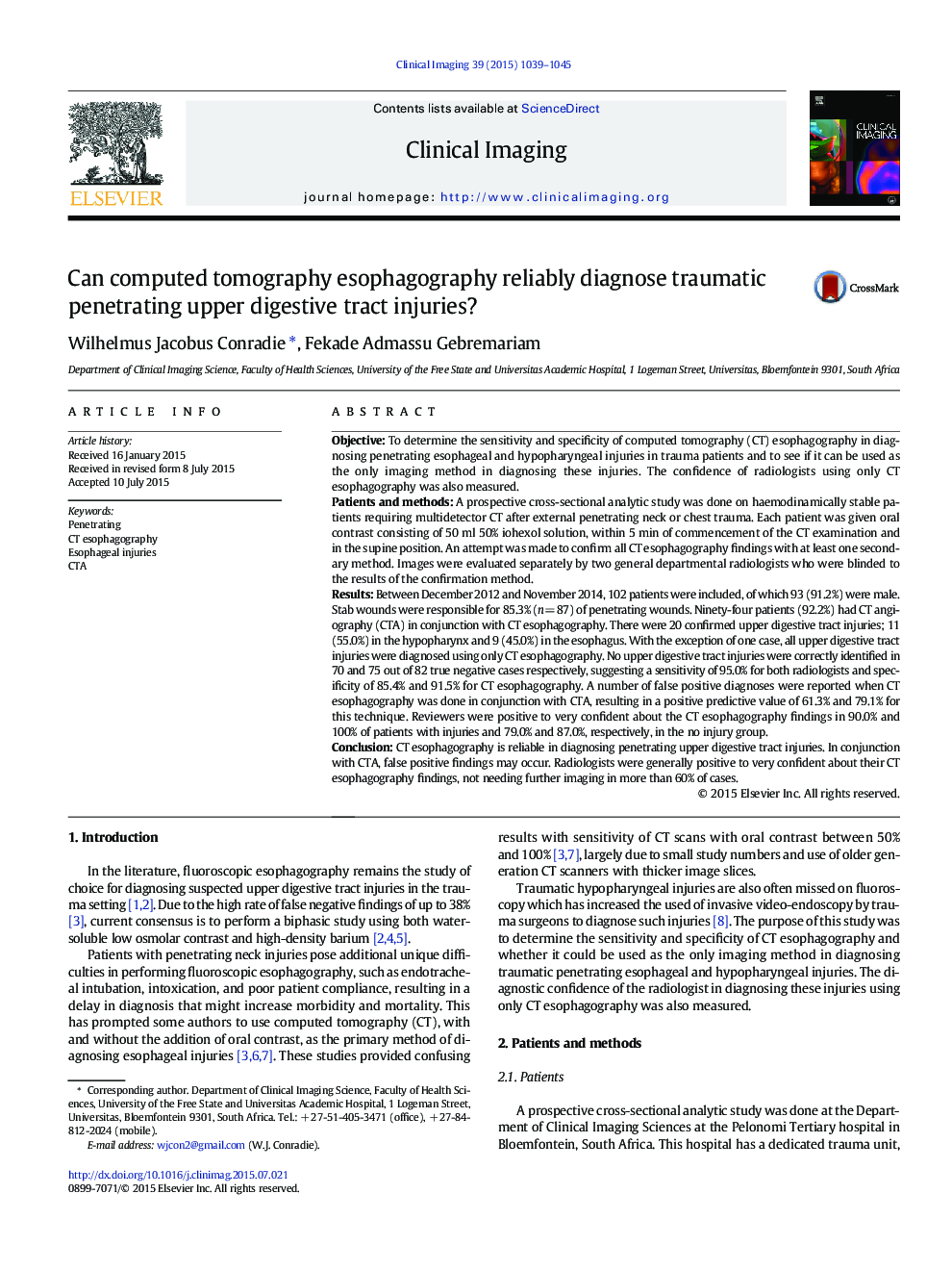| کد مقاله | کد نشریه | سال انتشار | مقاله انگلیسی | نسخه تمام متن |
|---|---|---|---|---|
| 4221289 | 1281618 | 2015 | 7 صفحه PDF | دانلود رایگان |
ObjectiveTo determine the sensitivity and specificity of computed tomography (CT) esophagography in diagnosing penetrating esophageal and hypopharyngeal injuries in trauma patients and to see if it can be used as the only imaging method in diagnosing these injuries. The confidence of radiologists using only CT esophagography was also measured.Patients and methodsA prospective cross-sectional analytic study was done on haemodinamically stable patients requiring multidetector CT after external penetrating neck or chest trauma. Each patient was given oral contrast consisting of 50 ml 50% iohexol solution, within 5 min of commencement of the CT examination and in the supine position. An attempt was made to confirm all CT esophagography findings with at least one secondary method. Images were evaluated separately by two general departmental radiologists who were blinded to the results of the confirmation method.ResultsBetween December 2012 and November 2014, 102 patients were included, of which 93 (91.2%) were male. Stab wounds were responsible for 85.3% (n= 87) of penetrating wounds. Ninety-four patients (92.2%) had CT angiography (CTA) in conjunction with CT esophagography. There were 20 confirmed upper digestive tract injuries; 11 (55.0%) in the hypopharynx and 9 (45.0%) in the esophagus. With the exception of one case, all upper digestive tract injuries were diagnosed using only CT esophagography. No upper digestive tract injuries were correctly identified in 70 and 75 out of 82 true negative cases respectively, suggesting a sensitivity of 95.0% for both radiologists and specificity of 85.4% and 91.5% for CT esophagography. A number of false positive diagnoses were reported when CT esophagography was done in conjunction with CTA, resulting in a positive predictive value of 61.3% and 79.1% for this technique. Reviewers were positive to very confident about the CT esophagography findings in 90.0% and 100% of patients with injuries and 79.0% and 87.0%, respectively, in the no injury group.ConclusionCT esophagography is reliable in diagnosing penetrating upper digestive tract injuries. In conjunction with CTA, false positive findings may occur. Radiologists were generally positive to very confident about their CT esophagography findings, not needing further imaging in more than 60% of cases.
Journal: Clinical Imaging - Volume 39, Issue 6, November–December 2015, Pages 1039–1045
